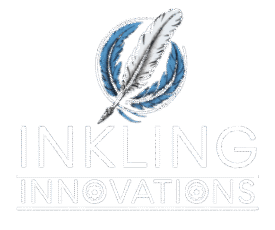Developing Fantasy Races And Creatures: Adding Depth To Your Fantasy Universe With The Ultimate Guide Template For Writers And World Builders
 Creating a fantasy world with real depth isn’t just about crafting an entertaining story; it’s about layering intricate details that make your universe feel alive. Imagine a place where readers don’t just pass through but linger, examining each corner because every detail feels like it belongs. Depth is what elevates a generic story into an enthralling saga, and is a great way to race design for novels.
Creating a fantasy world with real depth isn’t just about crafting an entertaining story; it’s about layering intricate details that make your universe feel alive. Imagine a place where readers don’t just pass through but linger, examining each corner because every detail feels like it belongs. Depth is what elevates a generic story into an enthralling saga, and is a great way to race design for novels.
Developing races and creatures is one of the fundamental ways to add this rich texture to your narrative. Think real life: different cultures interweave, and everyone’s experiences add to a larger tapestry. This idea applies just as well within fictional realms. When characters come to life with their own beliefs, systems, and histories, they become more than supporting elements; they become the essence of your story.
But why is it important? Depth draws readers in, transforming a good story into an unforgettable journey. It allows them to suspend disbelief and engage emotionally with your characters, regardless of how fantastical they might be. That’s why detailing the small bits, from the stitching on a warrior’s tunic to the peculiar rituals of an ancient tribe, holds such value in fantasy literature. So, using thoughtful world-building adds layers that encourage reader investment in your universe.
Understanding Cultural Interplay: Breathing Life into Races
Developing distinct cultures within your fantasy world is crucial. It’s not just doing it for show; it’s about creating authenticity. Start by defining what makes each race unique. Language, traditions, and values are foundational elements that dictate how your characters interact and evolve.
Drawing inspiration from real-world cultures can provide a solid base. While you want to create something new, there’s value in observing how existing societies function. Adapt these observations to suit your world’s particular context, ensuring originality while maintaining relatability.
When creating societies, understanding social structures and hierarchies is key. Every cultural facet you develop will affect how characters relate, whether they’re forming alliances or fueling conflicts. Balancing these aspects encourages diversity within your universe, offering readers intricate relationships to explore.
To breathe life into these races, consider their histories and legends. These stories shape cultural identities and beliefs, acting as a lens through which characters view the world. Myths aren’t just ancient tales; they’re living influences that impact everything from political structures to daily life, adding nuance and depth.
Finally, don’t neglect the importance of detailed interactions. When characters from different backgrounds interact, it opens opportunities to illustrate the rich tapestry of your universe. Encourage nuances in dialogue and characterization to show distinctions and similarities that enrich your narrative fabric.
Designing Distinctive Creatures: Beyond the Mythical Archetype
 Creating creatures that truly stand out in your fantasy world involves going beyond traditional myths and legends. While classic archetypes like dragons or unicorns have their place, innovative creature design adds fresh intrigue and depth.
Creating creatures that truly stand out in your fantasy world involves going beyond traditional myths and legends. While classic archetypes like dragons or unicorns have their place, innovative creature design adds fresh intrigue and depth.
Start by examining the anatomy of your creatures. This isn’t just about looks—consider how their physiology impacts their abilities and behavior. Are they adapted to live in specific environments? Do they possess unique characteristics that set them apart? These details enrich your world and spark curiosity in readers.
Where your creatures reside greatly influences their development. Think about habitat and ecology. How do these beings interact with their surroundings? Does their environment drive them to behave a certain way or develop specific skills? This relationship between creature and environment underscores the believability of your world.
Every creature should have a purpose. Consider their role in your narrative. Are they symbols of certain themes? Do they embody cultural beliefs or historical events within your world? Align their existence with the story’s overarching themes to provide an added layer of significance.
Lastly, explore how these creatures fit into the broader ecosystem of your fantasy realm. Interactions with other races or species can lead to complex relationships, alliances, or conflicts that drive plot points. This interconnectedness helps avoid the isolation of your creatures and makes them integral to the broader narrative.
Narratives and Histories: Enriching the Backstory
Backstories aren’t just about creating a history; they provide depth that shapes the present and future of your fantasy realm. A well-crafted backstory offers insights into why things are the way they are, giving context to current events and character motivations.
Establishing a historical context is vital. Consider the timelines of your world, from ancient beginnings to recent developments. How have past events influenced the current socio-political environment? These details build a layered narrative that stands up to scrutiny and keeps readers engaged.
Stories that shape the world, like myths and legends, play a crucial role. They’re not just bedtime tales; they’re threads that tie the past to the present. Maybe there’s an ancient prophecy driving a hero’s quest or a legendary beast’s return that everyone fears. Each story adds texture and narrative drive.
Blending realism with fantasy is about balance. Mix the fantastical elements with realistic details that resonate. Maybe the rise and fall of empires mirror those of real-world histories, adding a hint of familiarity. This blend bolsters believability and helps readers connect with the storyline.
Lastly, consider how history is remembered and recorded. Is it passed down orally, inscribed on ancient stones, or captured in sacred tomes? These methods affect how characters perceive their history and themselves, influencing identities and actions. Linking past and present through history not only grounds your world but elevates it.
Interactions and Conflicts: Crafting Dynamic Relationships
Relationships drive stories, adding layers to the plot and enhancing character arcs. In fantasy worlds, interactions between different races or species can create engaging conflicts and alliances that are crucial for narrative tension.
Consider interracial dynamics as a core element. Alliances form through shared goals or mutual enemies, while tensions arise from cultural differences or historical grievances. These relationships, filled with complexity, offer rich storytelling opportunities.
Character development shines through these interactions. Watching a character evolve through relationships can be compelling. Conflicts catalyze growth, whether they’re overcoming biases or learning from adventures in unexpected alliances. These arcs pull readers deeper into your story.
Political power plays often fuel relationships between races. Who holds the power? Why? Unequal distributions or shifts can lead to alliances, betrayals, or wars. Understanding these dynamics adds depth, making the storyline more believable and engaging.
Lastly, don’t shy away from emotional connections. Personal bonds, whether familial, romantic, or platonic, enrich the narrative tapestry. These connections humanize characters, allowing readers to form emotional attachments that make the stakes feel higher.
Innovating Within the Fantasy Genre: Redefining Tropes and Stereotypes
Breaking away from the conventional can breathe new life into your fantasy world. By reinventing classic races and creatures, you can deliver surprising moments that captivate readers. Go beyond predictable traits and roles to craft something unique that still respects the essence of fantasy.
Challenge norms by exploring diversity and inclusivity in your narrative. Fantasy settings often lack representation, but they don’t have to. Create space for diverse voices and perspectives, whether through varied character backgrounds or reimagining roles typically dominated by one gender or race.
Dismantle stereotypes by examining the roles your characters play in society. Maybe your knights prefer diplomacy over combat, or your healers dabble in darker powers. These shifts not only intrigue readers but encourage them to rethink established norms.
From world-builders to storytellers, leap to push boundaries. Inspire readers by showing them new possibilities in well-loved genres. This innovation isn’t just about novelty—it’s about crafting a world where everyone finds a place, bringing deeper connections to characters and storylines.
Innovating within the fantasy genre also enriches the author’s experience. Explore unexplored paths and narratives, drawing on current issues and trends to reflect them in your world. This exploration can lead to unexpected discoveries, enriching both your universe and the reader’s experience.
Innovating Your Fantasy Species Creating: The Ultimate Guide for Writers and World-builders
 Building a fantasy race isn’t about filling out a checklist—it’s about crafting people who feel real within the context of your world. Let their culture reflect the conflicts, history, and beauty of your setting. Let them evolve. Most importantly, let them surprise you. Here is an outline to guide you in your journey to building your fantasy race, or download this free fantasy race creation template and start creating!
Building a fantasy race isn’t about filling out a checklist—it’s about crafting people who feel real within the context of your world. Let their culture reflect the conflicts, history, and beauty of your setting. Let them evolve. Most importantly, let them surprise you. Here is an outline to guide you in your journey to building your fantasy race, or download this free fantasy race creation template and start creating!
1. Race Name
Give your race a name that fits the tone of your world. Think about alternate names too—what do other races call them? Do they have a nickname or a derogatory term?
2. Physical Description
Describe what they look like. Go beyond height and hair color—get into the weird and wonderful.
- Average size, lifespan, and physique
- Skin, eye, and hair colors
- Unique features: tails, wings, horns, extra limbs
- How do they age? Do they transform over time?
3. Culture and Society
How do they live, love, and interact with each other?
- Core values and traditions
- Music, dance, storytelling, or cuisine
- Gender roles (if any), family units, rites of passage
- Are they tribal, nomadic, or urban?
4. Homeland and Environment
Where your race lives shapes who they are.
- Typical environment (deserts, deep sea, floating islands)
- How do they interact with the land—do they build, adapt, or control it?
- Environmental challenges they’ve evolved to survive
5. Language and Communication
Language is culture. Think beyond just speech.
- Do they have their own tongue or a dialect?
- Writing system—glyphs, runes, pictographs?
- Non-verbal communication—clicks, pheromones, light pulses?
6. Religion and Beliefs
Every race believes in something—even if it’s nothing.
- Pantheon of gods, nature spirits, or ancestor worship
- Key myths, creation stories, afterlife beliefs
- Holy days or rituals
7. Government and Politics
How do they organize power and settle conflict?
- Monarchy, council, tribal elders, hive-mind?
- Are leaders chosen, born, or challenged?
- Relationships with outsiders—diplomatic or hostile?
8. Technology and Magic
Their level of advancement can change everything.
- Use of tools, architecture, and machinery
- Do they embrace magic or fear it?
- Are they technologically advanced or bound to tradition?
9. Strengths and Weaknesses
What makes your race special—and vulnerable?
- Are they naturally gifted in battle, intellect, or stealth?
- Do they have physical or magical resistance?
- What are their weaknesses—sunlight, iron, emotions?
10. Names and Naming Conventions
Names tell stories.
- How are names structured?
- Do they use titles, family names, or earned names?
- Examples of male, female, and neutral names
11. Additional Details
The odd bits and ends that don’t fit elsewhere.
- Taboos, idioms, insults
- Their role in the greater world or story
- Legendary figures or monsters tied to their people
MAGIC TYPE EXAMPLES
🧙♂️ 1. Elemental Magic
- Fire Magic – Flames, heat, combustion
- Water Magic – Ice, healing, tidal control
- Earth Magic – Stone, plants, metals, gravity
- Air Magic – Wind, storms, flight
- Lightning/Storm Magic – Thunder, electricity, speed
🧠 2. Mental & Psychic Magic
- Telepathy – Mind-reading, communication
- Telekinesis – Moving things with the mind
- Illusion Magic – Sight, sound, and mental deception
- Dream Magic – Entering, controlling, or creating dreams
- Emotion Magic – Influencing or feeding on feelings
🌌 3. Arcane or Raw Magic
- Chaos Magic – Unpredictable, reality-warping
- Void Magic – Darkness, anti-magic, nothingness
- Pure Arcane Energy – Spellcasting based on study or symbols
- Dimensional Magic – Portals, teleportation, alternate realms
⚰️ 4. Life & Death Magic
- Necromancy – Controlling or raising the dead
- Blood Magic – Sacrifice-based or power drawn from blood
- Healing Magic – Regeneration, disease cleansing
- Soul Magic – Manipulating souls or spiritual essence
🌿 5. Nature & Druidic Magic
- Plant Magic – Growth, entangling, poison
- Animal Magic – Communication, summoning, transformation
- Weather Magic – Control over climate and storms
- Seasonal Magic – Powers tied to spring, summer, autumn, winter
✨ 6. Divine & Celestial Magic
- Holy Magic – Light, protection, divine power
- Angelic Magic – Justice, order, purity
- Demonic Magic – Curses, contracts, temptation
- Star or Cosmic Magic – Constellations, time, celestial energy
📚 7. Rune & Symbol Magic
- Runic Magic – Symbols carved or drawn for magical effects
- Glyph Magic – Triggered magic through writing or markings
- Script Magic – Books or scrolls that hold an ancient power
🛠️ 8. Enchantment & Crafting Magic
- Alchemy – Potions, transmutation, gold-making
- Enchanting – Infusing objects with magical properties
- Artifice – Creating magical machines or golems
🌀 9. Time & Space Magic
- Time Magic – Slowing, speeding up, or reversing time
- Spatial Magic – Warping space, summoning, compression
- Chronomancy – Seeing or affecting timelines
🦸 10. Transformation & Body Magic
- Shapeshifting – Becoming other creatures or forms
- Size Alteration – Shrinking, growing
- Body Enhancement – Super strength, speed, senses







Designing fantasy races can be one of the most exciting yet complex parts of worldbuilding, especially when trying to strike a balance between originality and relatability. I’ve noticed that sometimes it’s easy to fall into tropes without realizing it – do you have any specific strategies for avoiding unintentional cultural parallels or stereotypes when crafting a new race? Also, when using a template, how do you keep the creations from feeling too formulaic or “checklist-built”? I’ve experimented with building races around unique ecological niches or belief systems, but I’m curious how you approach making each race feel truly alive and integrated into the world’s history and politics.
This was such a fantastic read—thank you for breaking down the process in such a practical, creative way!
I’m currently brainstorming for a sci-fi/fantasy hybrid story, and I’ve been wrestling with how to create unique alien species or futuristic cultures that don’t just feel like “humans in costume.” Your emphasis on building races from the inside out—especially considering how environment, belief systems, and values shape everything from appearance to social structure—was incredibly helpful.
I especially liked the prompt about what each race believes to be their purpose or role in the world (or universe!). That one question alone gave me so many ideas for conflict and alliances between groups in my story.
A couple of questions popped into my head as I read: Have you ever used this template for non-biological or AI-based “races” in a sci-fi setting? And how do you recommend balancing realism with creativity when designing something totally alien?
I really appreciate the free template—can’t wait to start filling it in with my own world’s inhabitants!
This article really opened my eyes to how much depth and thought goes into crafting believable fantasy worlds. I loved how it emphasized cultural interplay and the need to ground mythical creatures in realistic ecosystems. It’s refreshing to see a guide that blends creativity with structure so seamlessly. I’m curious—how do you personally keep track of all these intricate details when building multiple races or regions in your world?
Here are some questions about the article on developing fantasy races and creatures:
How can a writer balance drawing inspiration from real-world cultures with creating truly original fantasy races?
Beyond physical traits, what are some subtle ways to demonstrate cultural differences between fantasy races through dialogue or actions?
The article mentions giving creatures a purpose. How can a seemingly minor creature contribute to the overarching themes of a fantasy world?
What are some potential pitfalls to avoid when trying to subvert fantasy tropes and stereotypes related to races and creatures?
How can the “Additional Details” section in the race creation template be used to add unexpected depth and realism?
Of the magic type examples provided, which might lead to the most interesting cultural or societal developments within a race? Why?
-Phil
Ricky,
“Hey there! Your post on creating fantasy races and the template you shared absolutely blew me away—it’s such a brilliant tool for world-building! I really appreciated how you broke down elements like culture and physical traits, and the template makes it so much easier to get started. Thank you for putting together such a creative and useful guide! I did have one question: you talked about tying races to their environments, but I wasn’t entirely sure how to handle cases where a race might migrate or adapt to a new setting over time. Any tips on reflecting that in their design? Thanks again for this amazing resource!”
Sincerely,
STeve
Thanks for commenting Steve. Your question is interesting. When a race migrates or adapts to a new environment over time, that’s a fantastic opportunity to show depth and evolution in your world-building. You can focus on key elements like physical adaptations, cultural shifts, language and lore, or it could be the main conflict of your story and a story hook for your marketing. In any case, I say, let their environment shape their story, just like it would with any people group in the real world. The tension between “who we were” and “who we are now” is gold for storytelling.
This guide is an absolute goldmine for world-builders! I love how it goes beyond surface-level traits and really dives into culture, ecology, and even political dynamics. The naming conventions and magic categories were especially inspiring—I’m already rethinking one of my fantasy races! Has anyone used this template for a story or game yet? Would love to hear how you’ve brought your races or creatures to life using these ideas!
Some wonderful ways to create better back stories here. Just having a plain character can get rather boring, but giving him a personality, strengths and weaknesses and a history can make the interaction with him so much more addictive, and the idea is to keep people coming back for more or to find out more.
People love a good story and I think with any game, that is what keeps players coming back. Apart from a good challenge, it should be about intertwining yourself in the characters lives.
This was such a fun and thoughtful read! Creating fantasy races is one of the most exciting parts of worldbuilding, but it’s also easy to fall into clichés or unintentionally mirror real-world stereotypes. I really appreciated the focus on giving each race cultural depth, internal logic, and a sense of history beyond just their appearance or “role” in the world.
n my opinion, the most memorable fantasy races feel like they could truly exist—complete with unique values, conflicts, and contradictions. It’s that richness that makes readers care and keeps the world feeling immersive. Templates are a great starting point, but the magic really happens when you go beyond the framework and add those unexpected details.
Great resource—definitely bookmarking this for my next project!
I dabbled in D&D years ago, but I only played a handful of times. That said, your article is an outstanding and thoughtful guide to fantasy world-building, especially when it comes to creating races and species. It blends imaginative freedom with practical structure, and it subtly fosters cultural empathy through storytelling.
How do the races and creatures you create influence the moral or philosophical themes of your story world?
Thanks for commenting Matt. Races and creatures I create are often the heart of the moral and philosophical themes. I like to think of each race or species as embodying a particular perspective, value system, or flaw that reflects part of the larger human experience.
Hello Ricky!
I absolutely love the idea of using templates to create fantasy races! It’s such a great way to organize and develop all the rich details that make a race feel truly unique. I especially like the breakdown of physical traits, culture, and values—those details really help bring the race to life and make it feel integral to the world you’re building.
As someone who enjoys writing fantasy, I’ve found it can be easy to get carried away with one aspect of a race, like their abilities, and forget to flesh out their social structures or belief systems. This template seems like a great tool for keeping everything balanced.
Do you have any tips for making sure the races feel distinct from one another? Sometimes I struggle with making each race feel unique, especially if they’re all in a similar environment. Thanks for this fantastic resource!
Angela M 🙂
Thanks for commenting Angela. There are some things to focus on to make your races unique such as defining specific aspects of culture, unique speech patterns, and symbols or traditions. Just make sure you’re designing with purpose.
This post is such a fantastic resource for anyone diving into fantasy world-building! The way you break down the process of creating unique races while considering their culture, history, and physical traits is both thorough and inspiring. The template is a brilliant addition—it really helps streamline the creative process while ensuring depth and consistency. Thank you for sharing these insights; I can’t wait to put them into practice in my own writing!
Crafting unique fantasy races is pivotal for immersive world-building. The article from Inkling Innovations provides a comprehensive guide, emphasizing the importance of cultural interplay and distinctive creature design. By developing original languages, traditions, and anatomies, authors can create authentic societies that enrich their narratives. Incorporating these elements not only adds depth but also fosters reader engagement through intricate relationships and believable ecosystems.
Wow! I’m impressed at the amount of research you do to create those fantasy races and universe.
I agree, you have to do this, so your characters are close to real as possible, and exciting for your readers and audiences to connect continuously to your narrative.
Good luck on your story-telling. I’m sure it’s always a hit to kids and all ages for that matter.
Marita
The detailed exploration of creating unique races and creatures provides invaluable insights into crafting a world that feels rich and alive. I love how it emphasizes the importance of culture, history, and beliefs in shaping these fictional societies, making them more than just background elements but integral to the narrative. The inclusion of magic types and creature design tips gives readers practical tools to create compelling, diverse characters and creatures.
Wow what a very comprehensive guide on creating and developing fantasy races and creatures. You’ve covered everything from the physical which is obvious to the cultural including gender roles, diversity, language and skills or traits and even historical influences and the impacts of interaction with other races or creatures in the fantasy world. This helps to create a realistic and deep fantasy creature or race which adds to the story overall. Thanks for putting together such a comprehensive guide.